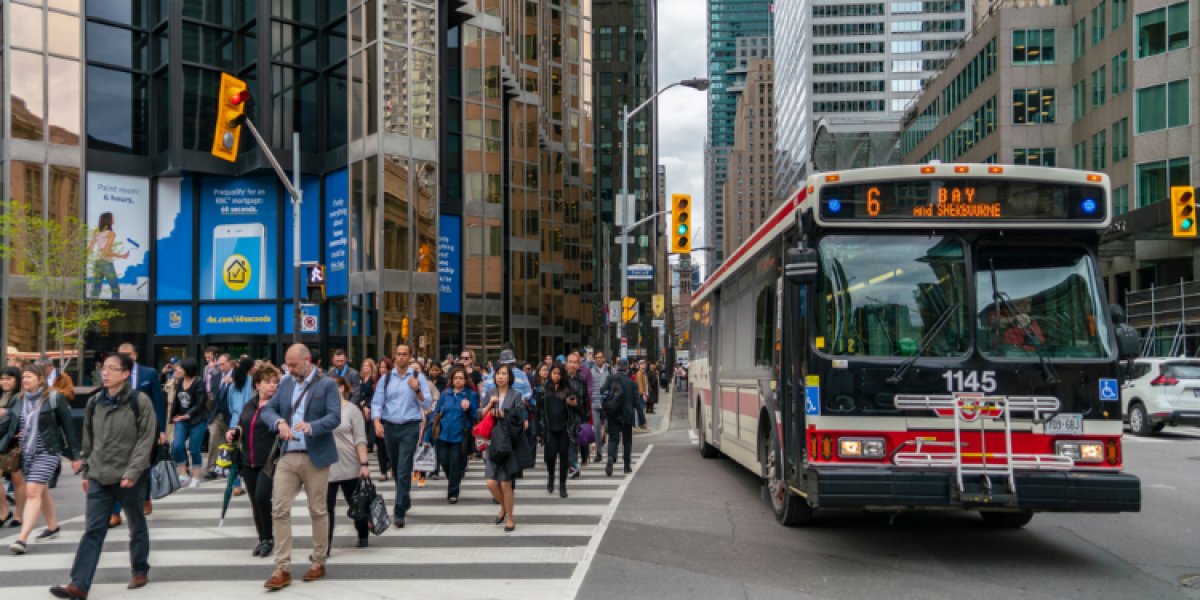
Are you looking for a stable job? Are you dreaming of moving abroad for new career opportunities? Canada starts 2023 with unemployment figures that would make other leading economies swoon. The country is still likely to gain valuable points with prospective immigrants. Used to good rankings, Canada is one of the favorite countries among expatriates. Will this be confirmed again this year by the drop in the unemployment rate? Will the government stick to its strategy to welcome 500,000 immigrants by 2025?
Unemployment goes down while demographics rise
Canada ended 2022 on a high note. According to Statistics Canada, its unemployment rate dropped to 5% (4% in Quebec) for an annual unemployment rate of 5.3%. The government is proud of these promising figures, proof of the success of its migration and economic policy. As of October 1, 2022, Canada's total population was just over 39 million. A first, mainly due to 340,666 new immigrants who relocated to Canada in 2020. There hasn't been such a peak since the 1950s, that is, since the baby boom. In 2022, the good demographic figures were primarily a result of immigration.
On November 1, 2022, Sean Fraser, Minister of Immigration, Refugees and Citizenship, unveiled his 2023-2025 Immigration Levels Plan. The country welcomed over 405,000 new immigrants in 2021, and it is looking forward to welcoming 465,000 in 2023, 485,000 in 2024 and 500,000 in 2025. The good unemployment figures do not seem to challenge these data. However, there are significant disparities between provinces. Some of them are attracting far more immigrants than others and boosting their economies. Remote communities and rural areas face more difficulties. The government's plan carefully focuses on these remote areas to encourage foreign talent to invest in small communities.
The most dynamic provinces in Canada
Ontario, Alberta, British Columbia, and Quebec are the four provinces that attract the most immigrants. Just over 4.2 million immigrants have settled in Ontario. There are more than 1.4 million in British Columbia, mainly in Vancouver. Quebec has 1.2 million, while Alberta counts almost a million immigrants, thanks to its large cities, with over 360,000 in Edmonton and over 460,000 in Calgary. The same provinces have low unemployment rates: 5.6% in Ontario, 5.8% in Alberta (barely 0.3 points and 0.5 points higher than the national average). British Columbia and Quebec are below 4% (and below the national average), with unemployment rates of 4.7% and 4.3%, respectively.
This is a virtuous cycle. Foreign talents are attracted to dynamic provinces and their large cities. Immigration contributes to their economic and demographic growth and to their international influence. British Columbia has Vancouver, Quebec has Montreal. Only Alberta has two flagship cities: Edmonton and Calgary. But the trend, if not reversed, could see new twists and turns. While Ontario is still largely driven by Toronto, the tide is turning. The big city is losing people.
Canadians are leaving Toronto
Are we witnessing a population turnover? In Toronto, newcomers seem to be replacing older residents and Canadian citizens who are moving to other provinces: this is called interprovincial migration. Toronto's good unemployment, economic activity and demographic figures hide an ambivalence. Last year, the city attracted 159,679 immigrants, representing 103% more than the previous year (78,849 new immigrants in 2021). One could associate this difference with Covid as Canada only reopened its borders in September 2021, and a large number of prospective expats were not able to travel in 2022. This large gap, however, does not appear to be a simple catch-up from 2021. It rather confirms a trend that has been in motion since the 2000s. As a matter of fact, Toronto has built its economic and demographic growth on immigration.
But the model is running out of steam. In 2022, 78,100 residents of the Greater Toronto Area (the megacity that includes Toronto and the cities of Halton, Peel, York and Durham) moved to other parts of Ontario. This compares to 73,500 the previous year. Far fewer are moving in the opposite direction. There is no interprovincial migration from small and medium-sized Ontario communities to Toronto. The city, long considered a career booster, is reportedly losing out to those who have lived there for a long time. Toronto has been criticized for its lower quality of life, a less friendly climate, and fewer career opportunities. Some observers believe that today's newcomers will soon emulate Canadian residents and citizens. In other words, they will leave Toronto for another city in Greater Toronto Area or another province.
Labor shortages
The Canadian miracle is failing some provinces. Although Toronto is losing ground, it enjoys a higher international profile than other cities in Ontario. The same is true for cities in other Canadian provinces. However, they are also affected by the labor shortage and desperately need foreign talent.
According to Statistics Canada, five sectors are particularly concerned by labor shortages: construction, retail trade, manufacturing, health care and social assistance, and accommodation and food services. While the trend between the number of new hires and vacancies is in decline, these sectors are still looking for workers. 40% of businesses say they are facing difficulties in recruiting. The larger provinces are not immune to such problems; Toronto is not Ontario; Vancouver is not British Columbia. Rural areas in the larger provinces are competing with rival cities, yet they, too, are facing significant labor shortages.
How to boost the attractiveness of rural areas?
This is a great concern for the Canadian government. The spotlight should be on the smaller provinces with unemployment rates that are comparable to the larger ones. In Manitoba and Saskatchewan, unemployment is as low as 4.6 percent. Immigration schemes, such as the Provincial Nominee Program (PNP) and the Atlantic Canada Immigration Program (ACIP), have been set up to attract foreigners to the cities and rural provinces. Initiatives are also developed locally; for example, Quebec has implemented immigration programs for skilled workers.
Still, businesses are essential to these initiatives. New Brunswick has developed its own program. This dynamic province is a leader in the fields of cybersecurity, information technology, and energy. Industry also has a place of choice, along with agriculture, health, advanced manufacturing, and education. These are all areas that are likely to attract foreign talent.
Like New Brunswick, other provinces are doing their best to promote their quality of life and living environment, and their efforts are paying. Manitoba, New Brunswick and Saskatchewan are among the provinces that attract new immigrants the most.
Useful links:



















